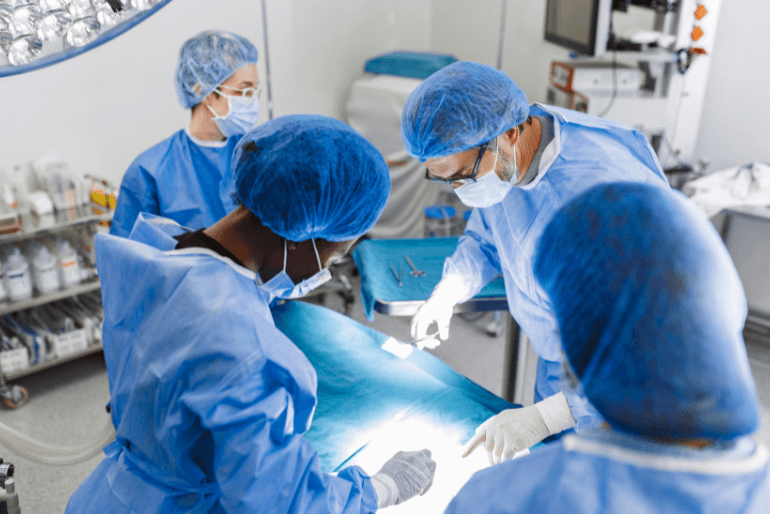The last few decades have seen remarkable development in the field of surgery. Therefore, minimally invasive surgery has replaced many more invasive methods. Since it employs cutting-edge tools and techniques that only necessitate tiny incisions and guarantee a speedier recovery, it is widely regarded as safer and more effective than conventional open surgery. Endoscopic surgery, laparoscopic surgery, and robotic surgery are examples of minimally invasive surgical techniques.
Where does minimally invasive surgery take place?
After administering general anesthesia, your surgeon will make three to four tiny cuts in the skin near the incision. One incision will be used to insert the endoscope and the other will be used to insert the surgical instruments. They may inflate the surgical site with carbon-dioxide gas to separate the organ from the skin.
A high-definition video monitor shows an enlarged image of the body’s internal organs and structures captured by the camera. The surgeon’s view is improved and magnified in this way, allowing for more precise control of the surgical instruments. Your surgeon will clean the incisions and stitch them shut once the procedure is over.
Benefits of Minimally invasive surgery.
Smaller incisions
With minimally invasive surgery, tiny incisions are made to get to the problem area. A standard open hysterectomy, for instance, necessitates a 6- to 12-inch incision. However, the risk of heavy bleeding is greatly diminished with laparoscopic and robotic hysterectomies, which only call for 3-4 tiny incisions less than an inch long.
Scarring is Minimal
Reduced need for sutures is another benefit of minimally invasive surgery. Even if scarring occurs, the incisions will be smaller than those left by open surgery. In time, surgical scars will fade to the point where they are barely noticeable.
Reduced Pain
Without major trauma to the body, patients recover from minimally invasive procedures more quickly and with less discomfort. Since quicker healing of surgical wounds means less postoperative pain and discomfort, less pain medication will be needed.
Greater precision and reduced potential for complications
The surgeon is able to operate with greater dexterity, precision, and adaptability during a minimally invasive procedure because of the use of a camera, miniature instruments, and illumination. The smaller the incisions, the less chance there is of complications like bleeding, swelling, and infection.
Hospitalizations last less time
You may be able to go home the day of or the day after surgery, depending on your health and the procedure.
Rapid Recuperation Period
Minimally invasive procedures reduce the need for hospitalization and recovery time, allowing patients to get back to their daily lives in as little as three to four weeks.
To schedule an appointment with the top Robotic & Laparoscopic Colorectal Surgeon in Gujarat for minimally invasive surgery, call Dr Avadh Patel today. Dr. Avadh Patel, colorectal surgeon in Ahmedabad, has years of experience and expertise in offering cutting-edge surgical procedures to all of his patients.

